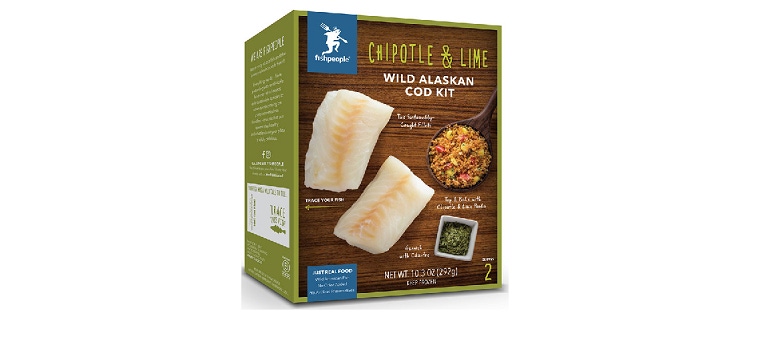Over time consumer confidence in delivered fish selections may grow, but retailers can counter with in-store options.

Meal kits have caught the attention of retailers such as Kroger and Whole Foods. These traditional retail stalwarts and others have included prepped meal brands on their shelves in order to retain customers who might otherwise pledge their allegiance to delivery options.
Though the trend is swiftly evolving, the seafood subsector is one that may have given some of the industry pause before opting to roll out fish-based prepped meals.
“Seafood-only kits have a major hurdle they have to overcome before becoming mainstream,” said Scott Keatley, registered dietitian-nutritionist at Keatley Medical Nutrition Therapy. “Companies must overcome the fear factor with seafood. Working with clients in my nutrition practice, I find this is most difficult for the average person. Many people fear the fish will go bad very quickly and they won't have time to eat it.”
Despite Keatley��’s analysis, the time of trepidation before wading into the waters of prepared seafood may be running short.
“Online resources appear particularly interesting to the [seafood] category’s most-loyal consumers,” Mintel’s Fish and Shellfish US 2016 said, pointing out that seafood lovers who can’t access the products that they seek at their local retailer can access them digitally via sellers positioned anywhere on the globe. This proves especially true in landlocked areas that struggle to find fresh options as they are far from a coast.
Chris H. Lam, president and CEO of Pucci Foods, has launched an initiative that is looking to assuage any of those consumer doubts.
“When the shoppers go to the supermarket or a fishmonger to purchase seafood, they want the freshest possible. Ordering seafood online is not familiar to many of my buyers yet,” Lam said while discussing Daily Fresh Fish, a seafood-centric meal kit provider that ships prepped selections across the United States.
Though still within its first year of operation, Lam is confident that over time, consumer comfort level with prepared seafood deliveries via the digital marketplace will increase.
“Food, especially fresh food, is coming slowly,” said Lam. “I still believe the online channel has much potential. We started [Daily Fresh Fish] to help those who couldn’t get our products or don’t have easy access to fresh or high-quality seafood. The only way around the trepidation is to provide 100 percent guaranty of freshness.”
The company’s roster of selections includes sashimi-grade ahi tuna, Alaskan halibut, swordfish, Dungeness crab, jumbo shrimp, crab legs and others.
Fishpeople, another seafood meal kit provider, is also confident that consumers can learn to trust the products that it and its contemporaries offer.
“Consumers want to incorporate more seafood into their diets, but they are often held back by a handful of fears, including how difficult it is to prepare, how messy it is to clean up, and how to be sure what they’re eating is sustainable and ethically caught,” said the company’s CEO, Ken Plasse. “They want to know where their fish came from, how it was caught and that it’s safe to eat.”
Fishpeople sources its offerings from “small-scale” domestic fishermen who employ sustainable methods.
“A good meal kit addresses consumer concerns by making it easier for them to access sustainable and ethically sourced seafood and prepare it with minimal fuss and maximum flavor,” Plasse said. “Meal kits that address these consumer needs will see continued success across many channels including subscription meal delivery services, classic grocery and mass retailers, and e-tailers alike.”
Fishpeople meals are available via delivery or onsite at traditional retailers and include two wild-caught fish filets, a chef-crafted topper and garnish, a moisture-lock tray and foil and step-by-step instruction card for prep.
Just how much seafood kits will take dollars away from retailers’ seafood case is still to be determined, but some stores aren’t waiting around to see and are getting in on the action.
Launching a test of in-store meal kits this past spring, Publix included seafood-based options in its trial. Angela Fernandez, VP of retail grocery and foodservice for GS1 U.S., believes the company has the right idea.
Fernandez says that entrenched brick-and-mortar retailers “absolutely” can invest in involving their own seafood department in this modern trend. She suggested that stand-alone meal kit companies need to build their brand and reputation so that potential customers know that they can deliver a fresh, quality product.
“Meal kit companies have to tell stories about their food and the people who catch and harvest it,” Fernandez said. Traditional retailers can typically let their reputations speak for themselves, she said, adding, “Traditional retailers already have that foundation.”

About the Author(s)
You May Also Like




